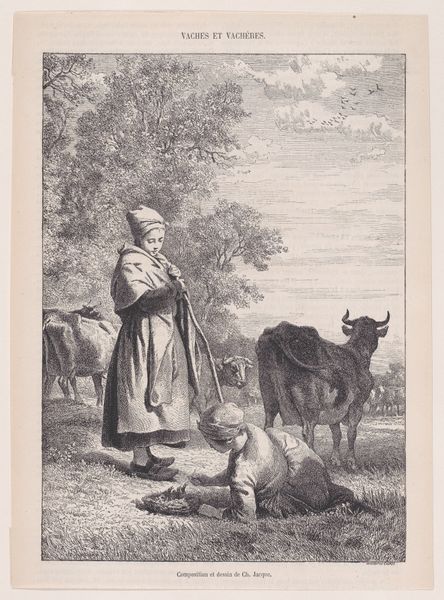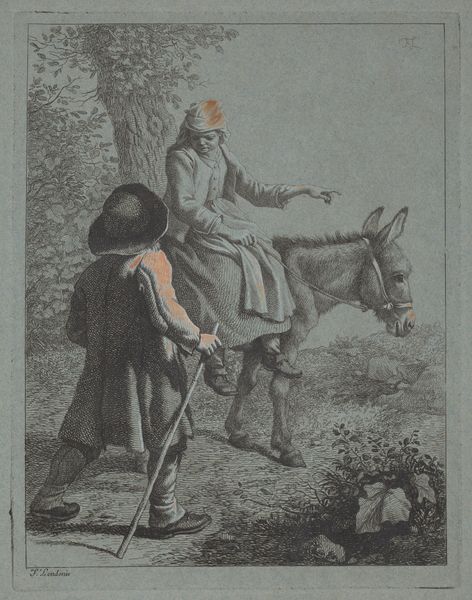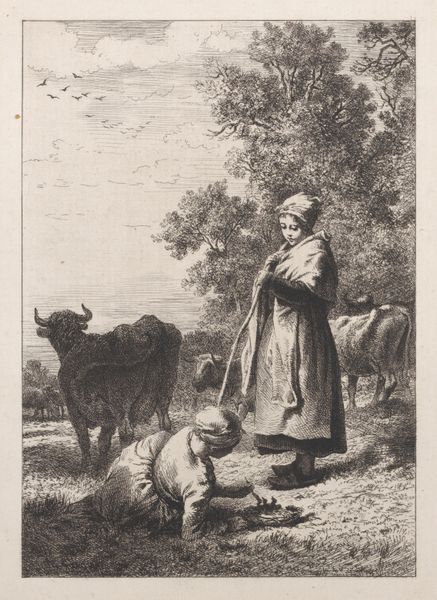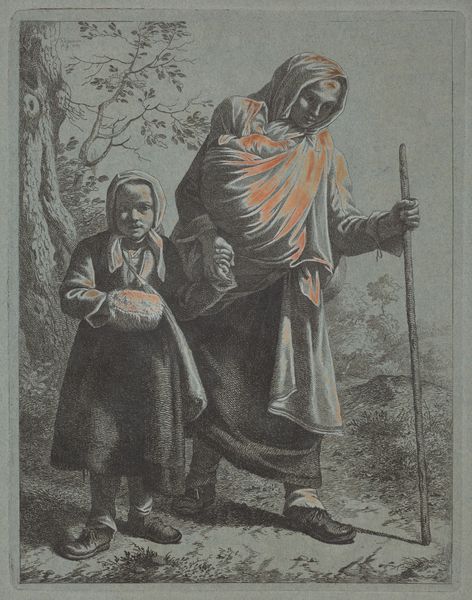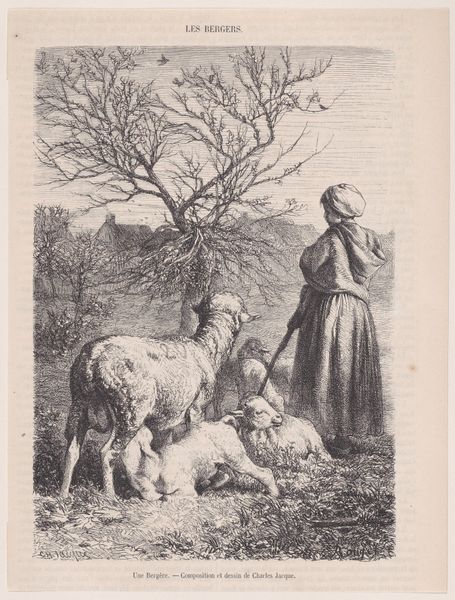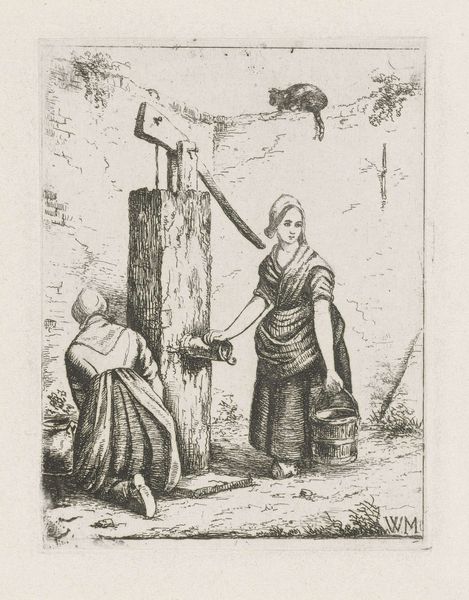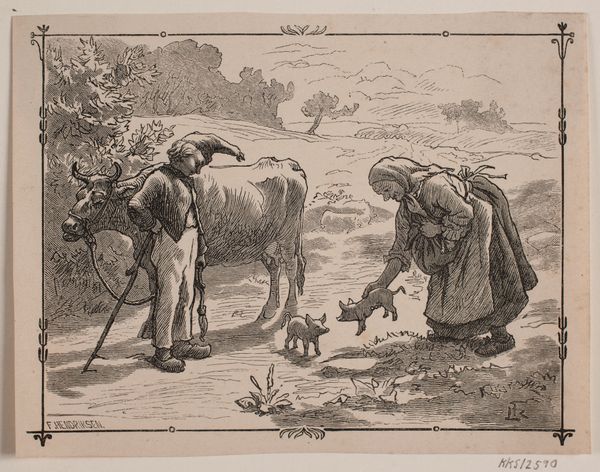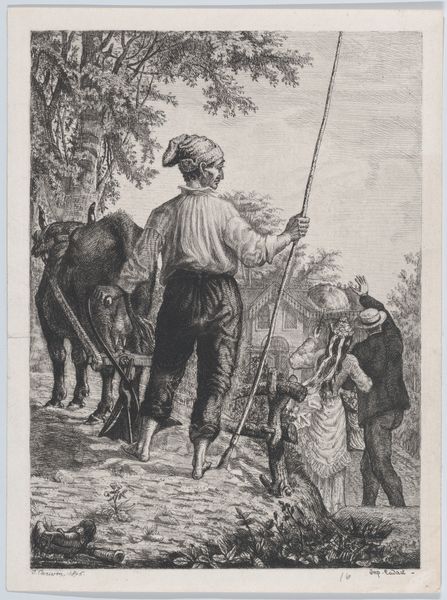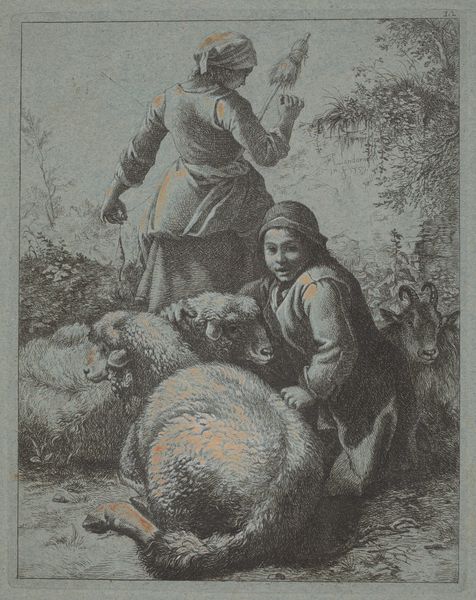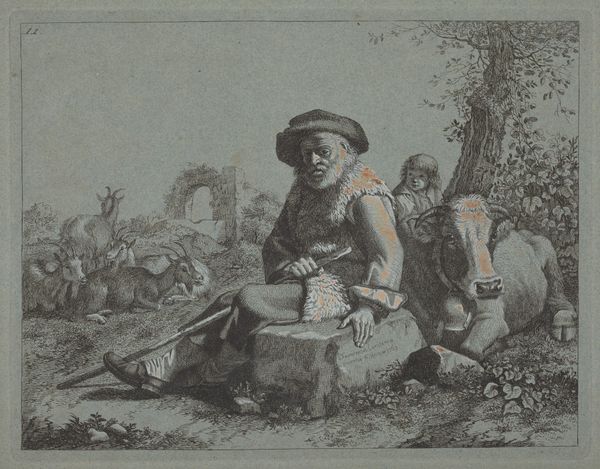
drawing, print, etching
#
portrait
#
drawing
# print
#
etching
#
landscape
#
charcoal drawing
#
genre-painting
#
rococo
Dimensions: plate: 17.6 x 14.1 cm (6 15/16 x 5 9/16 in.) sheet: 28 x 22.1 cm (11 x 8 11/16 in.)
Copyright: National Gallery of Art: CC0 1.0
Francesco Londonio made this etching of a Child Shepherdess with Flock in 1758. Through its depiction of rural life, the image speaks to the growth of Enlightenment ideas of nature and simplicity. The choice of subject reflects the increasing popularity of pastoral themes within eighteenth-century European art. Londonio, who was from Italy, produced this image during a time of significant social and economic change. As cities grew, there was an increasing interest in romanticizing rural life. It’s interesting to note how Londonio idealizes the figure of the child shepherdess. We can ask, is this a realistic portrayal, or is it a commentary on social class? What does it mean to depict a child in this role, and how might that reflect changing attitudes towards childhood in the 18th Century? To understand this work more fully, we might look to period literature or social histories. These sources could give us a better sense of how people viewed rural life and childhood at that time. Ultimately, this etching reminds us that art doesn't exist in a vacuum. It's always a reflection of the society and institutions in which it was created.
Comments
No comments
Be the first to comment and join the conversation on the ultimate creative platform.
